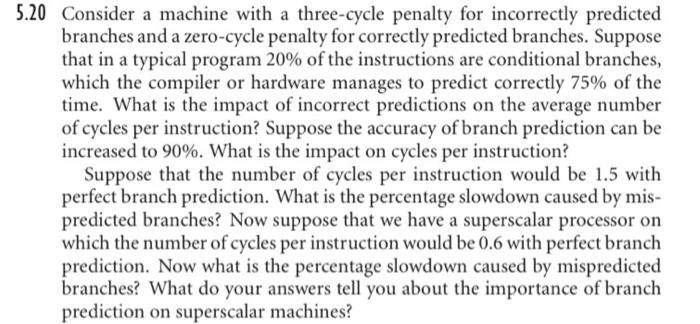Answered step by step
Verified Expert Solution
Question
1 Approved Answer
Please answer ALL questions and all parts or none at all. Thank you in advance. 4.3 Give two examples of reasonable semantic rules that cannot
Please answer ALL questions and all parts or none at all. Thank you in advance. 



4.3 Give two examples of reasonable semantic rules that cannot be checked at reasonable cost, either statically or by compiler-generated code at run time. Consider a machine with three condition codes, N,Z, and O.N indicates whether the most recent arithmetic operation produced a negative result. Z indicates whether it produced a zero result. O indicates whether it produced a result that cannot be represented in the available precision for the numbers being manipulated (i.e., outside the range 0..2n for unsigned arithmetic, 2n1..2n11 for signed arithmetic). Suppose we wish to branch on condition A op B, where A and B are unsigned binary numbers, for op {,}. Suppose we subtract B from A, using two's complement arithmetic. For each of the six conditions, indicate the logical combination of condition-code bits that should be used to trigger the branch. Repeat the exercise on the assumption that A and B are signed, two's complement numbers. 5.17 With the development of deeper, more complex pipelines, delayed loads and branches became significantly less appealing as features of a RISC instruction set. In later generations, architects eliminated visible load delays but were unable to do so for branches. Explain. 20 Consider a machine with a three-cycle penalty for incorrectly predicted branches and a zero-cycle penalty for correctly predicted branches. Suppose that in a typical program 20% of the instructions are conditional branches, which the compiler or hardware manages to predict correctly 75% of the time. What is the impact of incorrect predictions on the average number of cycles per instruction? Suppose the accuracy of branch prediction can be increased to 90%. What is the impact on cycles per instruction? Suppose that the number of cycles per instruction would be 1.5 with perfect branch prediction. What is the percentage slowdown caused by mispredicted branches? Now suppose that we have a superscalar processor on which the number of cycles per instruction would be 0.6 with perfect branch prediction. Now what is the percentage slowdown caused by mispredicted branches? What do your answers tell you about the importance of branch prediction on superscalar machines 



Step by Step Solution
There are 3 Steps involved in it
Step: 1

Get Instant Access to Expert-Tailored Solutions
See step-by-step solutions with expert insights and AI powered tools for academic success
Step: 2

Step: 3

Ace Your Homework with AI
Get the answers you need in no time with our AI-driven, step-by-step assistance
Get Started


